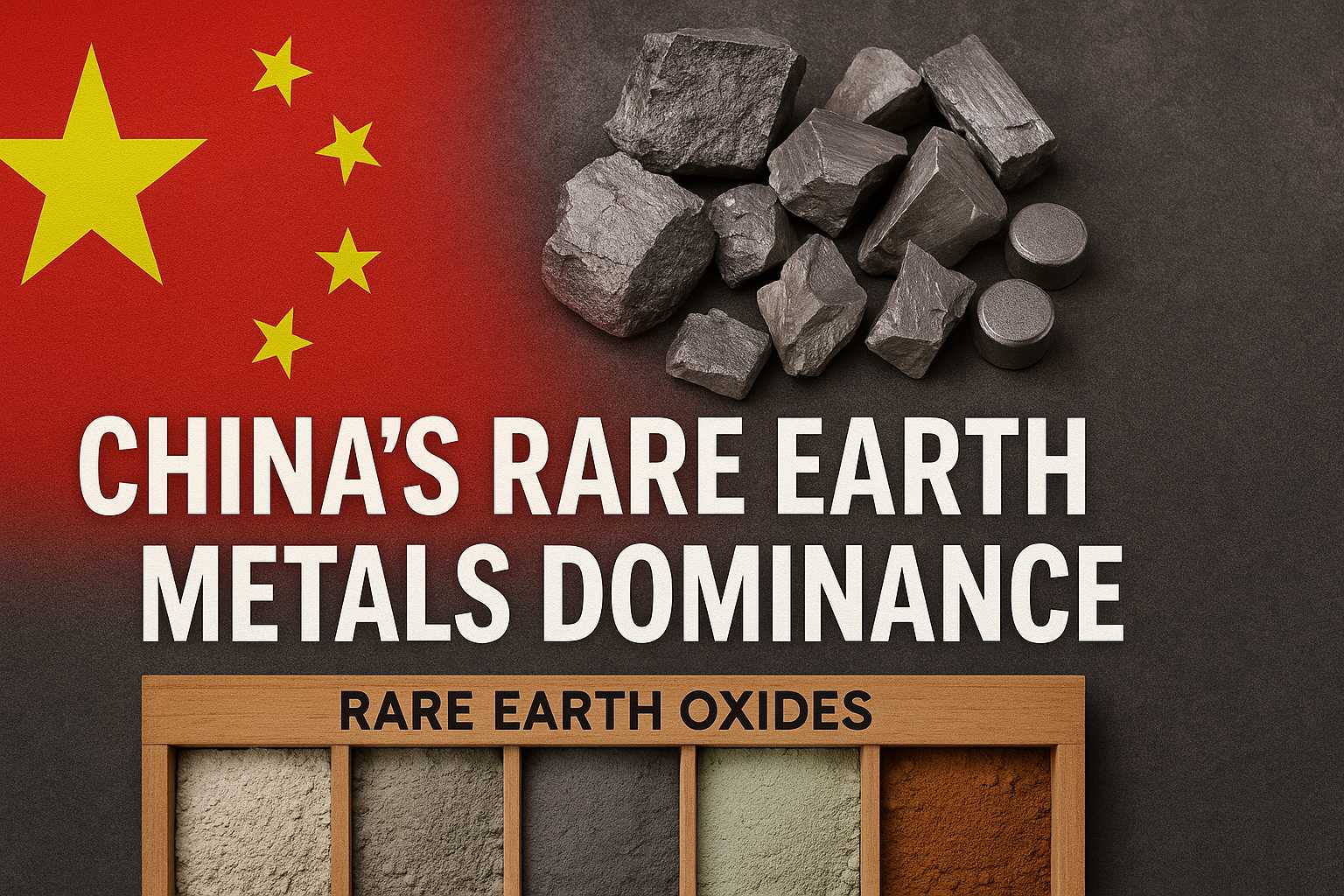
Sarthak Tyagi
Web Developer | AWS Cloud Architect

Explore how China built global dominance in rare earth metals, powering EVs, tech, and defense. Learn its strategies, economic impact, environmental costs, and how nations are reacting to reduce dependency.
Rare earth metals – a group of 17 elements including neodymium, dysprosium, and lanthanum – power the technologies that define the modern world: smartphones, electric vehicles, renewable energy systems, advanced defense equipment, and more. Though the average consumer may never hear about them, these metals are foundational to innovation and infrastructure. And in this critical domain, China reigns supreme.
Over the last three decades, China has strategically built an empire around rare earths, gaining control not only of mining but of the entire processing and manufacturing ecosystem. This blog explores how China achieved this dominance, the economic and environmental implications, how other nations are responding, and what the future might hold.
China's ascent in the rare earth sector is a story of vision, timing, and aggressive industrial policy. In 1992, Deng Xiaoping famously said, "The Middle East has oil, China has rare earths." That statement became a strategic doctrine.
In the 1980s and 1990s, the United States and other Western countries still had substantial rare earth production. But China, recognizing the long-term value of these materials, invested in mining, research, and refining capacity. By offering rare earths at extremely low prices — thanks in part to lower labor costs and looser environmental regulations — Chinese producers drove global competitors out of the market.
By 2000, China had captured over 80% of the global rare earth market. By 2010, it reached a near-monopoly with 97% global market share. While that figure has decreased slightly in recent years due to global diversification efforts, China still controls:
These numbers reflect more than just resource availability — they underscore how China has developed the entire value chain, from raw material to high-tech application.
Rare earths are indispensable in sectors that shape the global economy:
By dominating these elements, China has effectively positioned itself as a gatekeeper to future industries. Its strategic focus on vertical integration means that Western companies rely not only on Chinese mining, but also Chinese refining, component manufacturing, and even recycling.
This creates significant leverage. Countries pursuing clean energy goals, advanced military systems, and semiconductor advancements are often directly tied to China for critical inputs.
Additionally, rare earth dominance has strengthened domestic industries, attracted foreign manufacturers, and helped China transition from low-cost assembly to high-value technology manufacturing.
In the last decade, China has further fortified its position:
In 2021–2022, China merged three of its largest rare earth producers into a single state-owned behemoth. This allowed greater control over pricing, production volume, and export strategy, akin to an OPEC-style influence.
Amid U.S.-China trade tensions, China began selectively limiting exports of heavy rare earth elements such as dysprosium and terbium — crucial for defense and green technologies. New licensing systems require buyers to declare end uses, creating chokepoints in global supply chains.
In 2023, China restricted exports of rare earth refining technology to prevent other countries from replicating its processes. This ensures that even if nations mine their own rare earths, they still rely on Chinese know-how to process them.
Chinese companies have invested in rare earth mines in Africa, Myanmar, and South America, further extending their control over global reserves.
China’s rare earth empire was built on efficiency — but also on environmental compromise.
In Baotou, Inner Mongolia, decades of rare earth refining created a massive toxic tailings lake. The waste contains hazardous chemicals, radioactive materials, and heavy metals. The environmental toll includes:
In provinces like Jiangxi and Guangdong, illegal mining flourished in the 1990s and 2000s. In-situ leaching — pumping chemicals underground to extract metals — devastated ecosystems. Even today, China is struggling with:
The Chinese government has since imposed stricter regulations, shut down illegal operations, and launched restoration projects. However, experts estimate that full environmental recovery may take 50–100 years.
Recognizing the risks of over-dependence on China, several countries are actively investing in alternative supply chains.
| Country | Mining | Processing | Tech Capability | Policy Support | Outlook |
|---|---|---|---|---|---|
| China | High | Very High | Advanced | Strong state-led model | Dominant |
| USA | Moderate | Low | Growing | Military & energy funding | Expanding |
| Australia | High | Moderate | Moderate | Government-backed projects | Resilient |
| EU | Low | Low | Low | Green Deal, CRMA | Developing |
| Japan | None | Outsources | Moderate | Public-private partnerships | Stable |
| India | Low | Very Low | Emerging | Early policy formation | Nascent |
China is unlikely to relinquish its rare earth dominance anytime soon. Its long-term goals include:
Moreover, China's Belt and Road Initiative (BRI) supports rare earth exploration in partner countries, ensuring long-term access to global reserves.
Meanwhile, it continues to improve domestic production technologies to reduce environmental impact and maintain cost competitiveness.
China's rare earth strategy has reshaped global trade, industry, and geopolitics. What started as a resource advantage has become a foundation for economic power, diplomatic leverage, and environmental controversy.
As countries race to build alternative supply chains, they must also reckon with the costs China bore — and often ignored — to reach its position.
For business owners, manufacturers, and policymakers, rare earth metals are no longer a niche concern. They are central to the future of technology, sustainability, and national security.
The question remains: ca****n the rest of the world catch up before China extends its lead even further?